When you walk into any BJJ school, you’ll see a variety of belt colors wrapped around practitioners’ waists. Often these belts correspond to comfort levels and confidence which the practitioners seem to carry.
What is the significance of one’s belt color? Let’s take a walk through the belt colors in BJJ and learn about each rank.
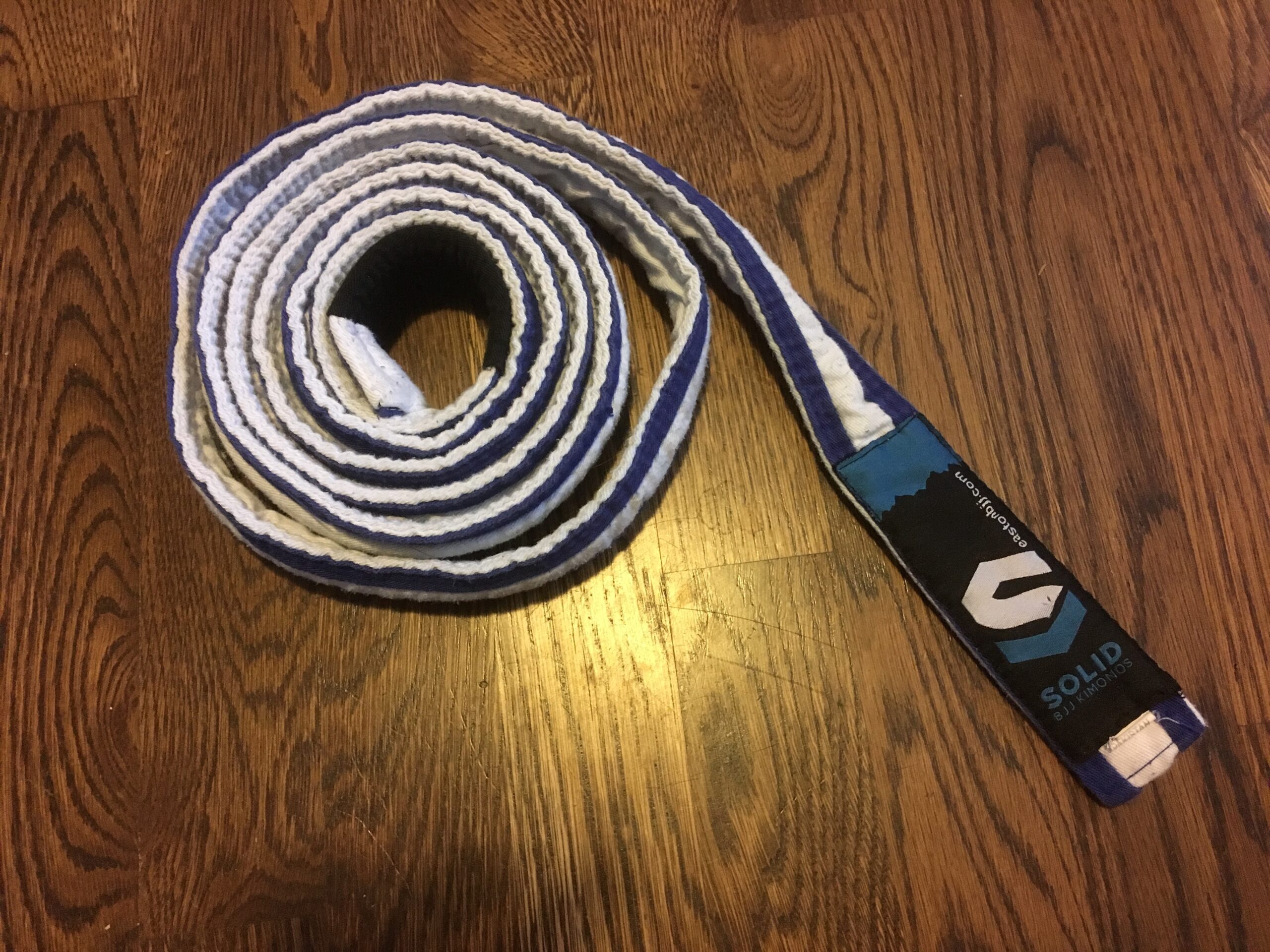
White Belt: New Beginnings
The white belt is the first belt in BJJ and, some would say, also the most difficult belt to earn! A practitioner earns their white belt the day they have the courage to step onto the mat for the first time and try something new.
The white belt phase is about survival. As the least experienced students in the room, white belts will struggle while rolling with higher level belts. The goal at white belt is to learn to defend yourself effectively against more skilled practitioners.
Unlike many other martial arts, practitioners of BJJ spend very long periods of time at each belt level, so it’s not unusual to see a student who trains regularly spend 1.5 – 2 years as a white belt. As there’s a very large difference in skill between a student on their first day and a white belt who’s trained for 2 years, the stripe system was introduced.
White belt practitioners will typically earn a stripe on their belt every 3-4 months if they attend class regularly. At many academies, stripes are often signified with small pieces of tape wrapped around the end of the belt. At Easton, we have our own belts with blue stripes that run the length of the belt. White Belts must earn four stripes before promotion to the Blue Belt level.
[The Student’s Job: Tools to Help You Learn Jiu Jitsu]
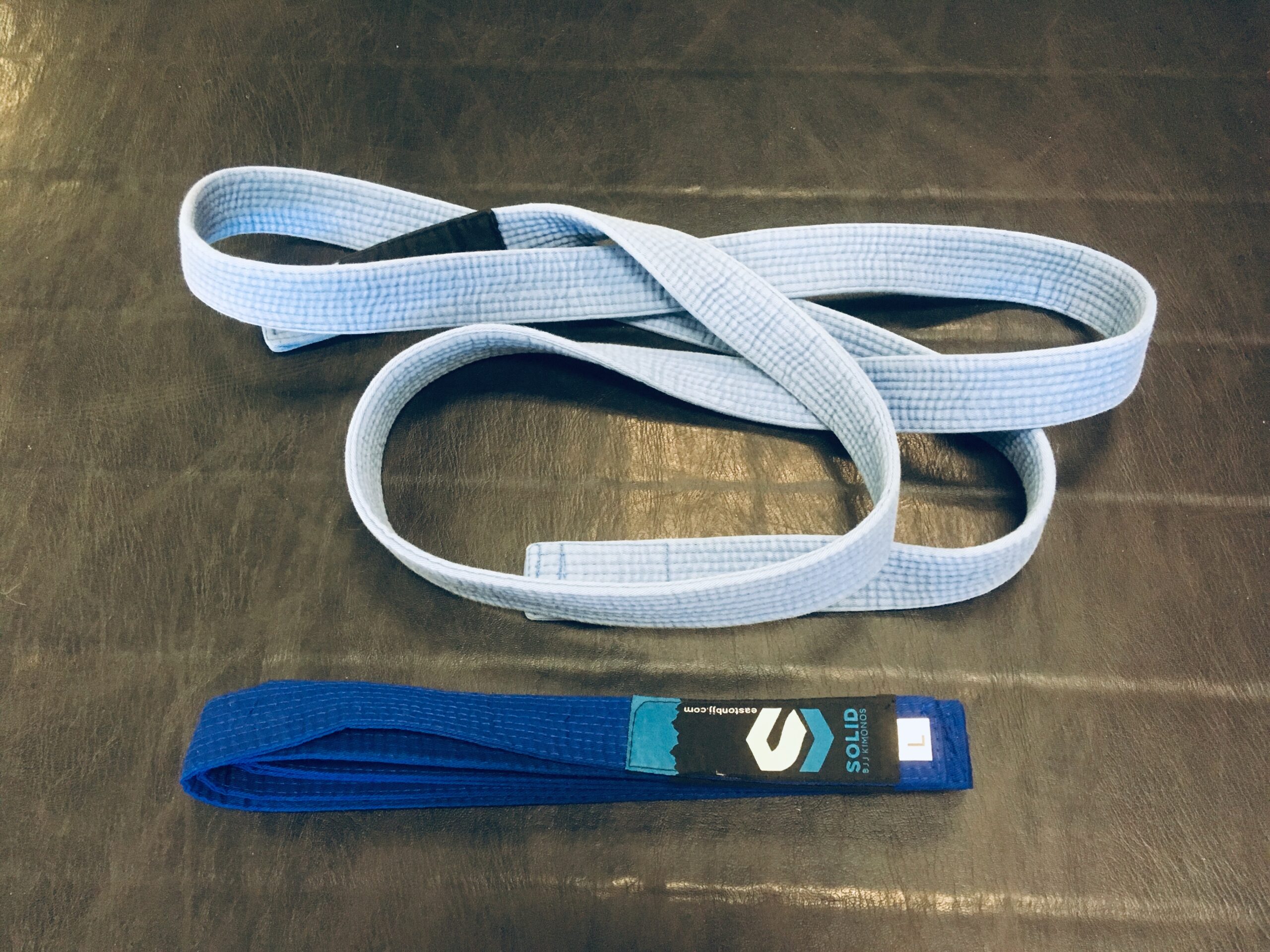
Blue Belt: Adolescence
There are generally two things a student must achieve to earn the blue belt in Jiu Jitsu. First of all, the student must master the basics of BJJ and be able to defend themselves effectively against an untrained opponent. Secondly, the student must learn to be a good training partner who can both “go live” and train safely with a new student.
This means a Blue Belt has learned both to control an untrained opponent without hurting them, and to control themselves while rolling so that their movements are calm and calculated instead of the wild bursts of uncoordinated movement that’s common at the white belt level.
A Blue Belt is considered a dedicated and serious student of BJJ. As a blue belt, a student’s main objective is to learn as much as possible about all the different techniques and styles. It’s important to develop breadth of knowledge before depth.
Blue belt is typically the longest-held belt in BJJ. The International Brazilian Jiu Jitsu Federation (IBJJF) requires that practitioners spend a minimum of 2 years at the blue belt level before advancing to purple. However, most students will spend longer than this, putting in 3 or even 4 years as a blue belt.
While the use of stripes on the white belt is mostly universal, not all BJJ schools award stripes on colored belts. For this reason, the best indication of how long someone has been a blue belt is the condition of the belt itself. A tattered, faded blue belt like in the picture above might easily have been training three times as long as the student with a crisp, new dark blue belt!
Purple Belt: Developing Your Game
Purple is considered an “upper belt” in BJJ, and a Purple Belt practitioner is typically considered advanced enough to teach lower-ranked belts.
While there’s little in the way of hard data, it’s also generally understood that the majority of students who begin training BJJ do not make it to the purple belt level. Life events, career goals, or simply the grind of hard work it takes to make it through the years of blue belt cause many practitioners to drop out before reaching the purple rank. Thus, a practitioner with a purple belt around their waist is known to be a highly dedicated student of the art.
[Why You Must Train Live in BJJ]
The Purple Belt has already achieved a wide knowledge of BJJ techniques, and the goal at purple is to begin to develop one’s own “game.” Purple belts begin to focus in on the techniques and styles that work best for their physique and body type, choosing the style of BJJ player they ultimately want to become.
The IBJJF requires students to spend a minimum of 1.5 years at purple belt, but most students will spend 2-4 years at purple if they train regularly.
[Why You’re Hearing More and More About BJJ]
Brown Belt: Polishing
A Brown Belt is considered an expert in BJJ, one who needs only polishing to achieve the venerable black belt. A brown belt practitioner has typically learned what techniques and styles suit them and has a well-developed game. The goal at brown belt is to sharpen and refine one’s technique until it is crisp enough for the promotion to “Professor.”
The IBJJF requires a minimum of 1 year be spent at brown belt. The brown belt period is usually shorter than the blue and purple belts, with dedicated students typically spending 1.5 – 3 years at this rank.
[Games of Resilience: BJJ x Chess]

Black Belt: Professorship
The black belt in Jiu Jitsu typically takes a total of 8 – 12 years to achieve. A black belt is a polished expert who is capable of starting their own academy and promoting students.
Unlike the colored belts, stripes are universally used and recognized on the black belt. A BJJ black belt has a red bar on the end where white stripes can be affixed. This red bar distinguishes the BJJ black belt from black belts of other martial arts. A black belt receives a stripe at 3, 6, 9, 14, 19, and 24 years of service as a professor.
According to IBJJF standards, an academy owner must have 3 stripes on their black belt in order to award other black belts, meaning they have been a black belt themselves for at least 9 years.
Black belt is not the end of the journey! After a total of 31 years as a professor, a practitioner can advance to the rank of a red and black belt, and after another 17 years ultimately become a “Grand Master” of BJJ with a solid red belt. Due to time-in-rank requirements, the youngest age at which anyone can achieve the Grand Master rank is 67 years old. For these practitioners, BJJ is a lifelong commitment.
No matter what rank you are, you always have opportunity to continue to learn and grow, both on the mats and in your daily life and responsibilities. Martial arts is an exercise in continuous improvement, and the belt colors are simply mileposts along the way.


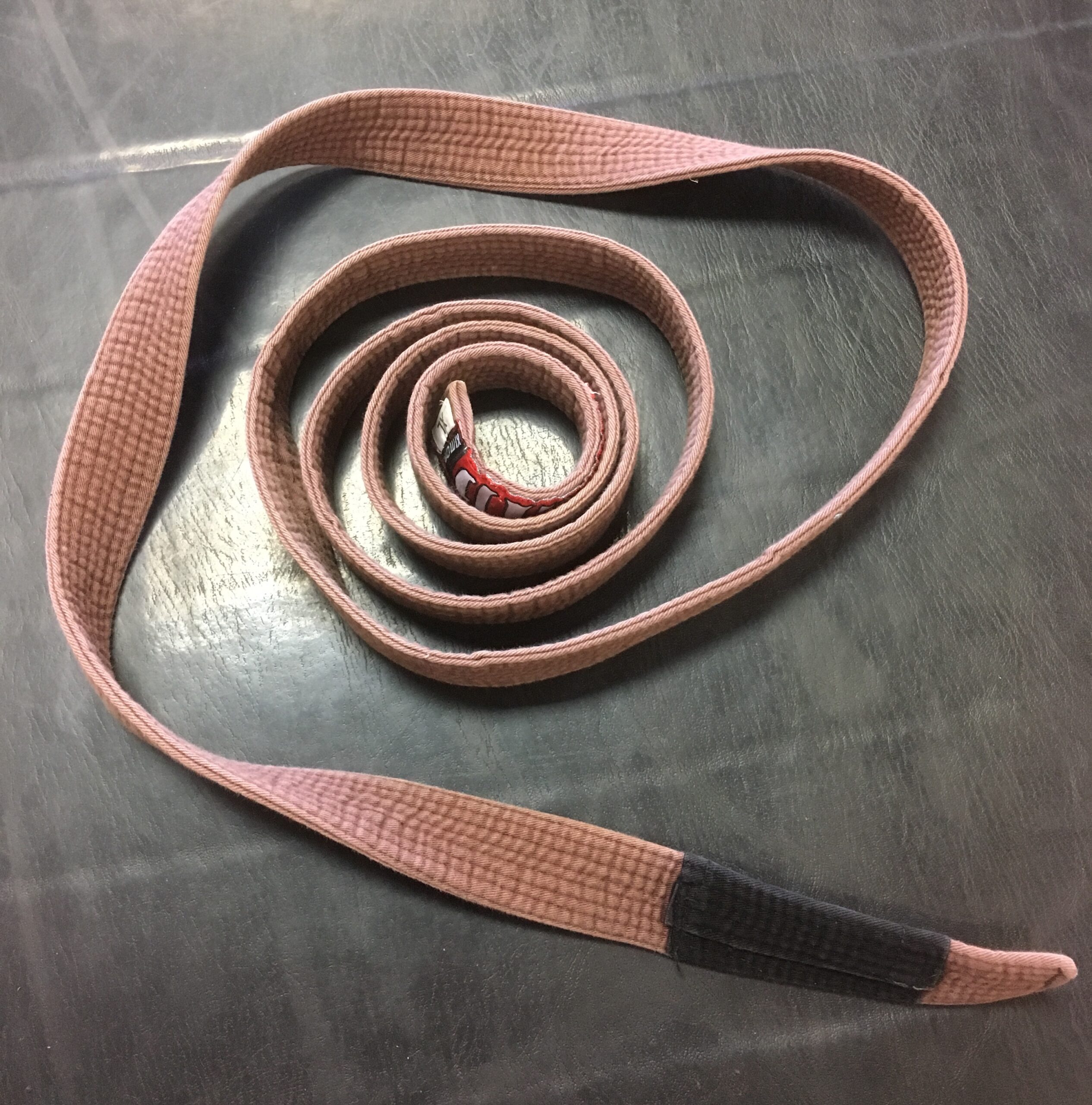

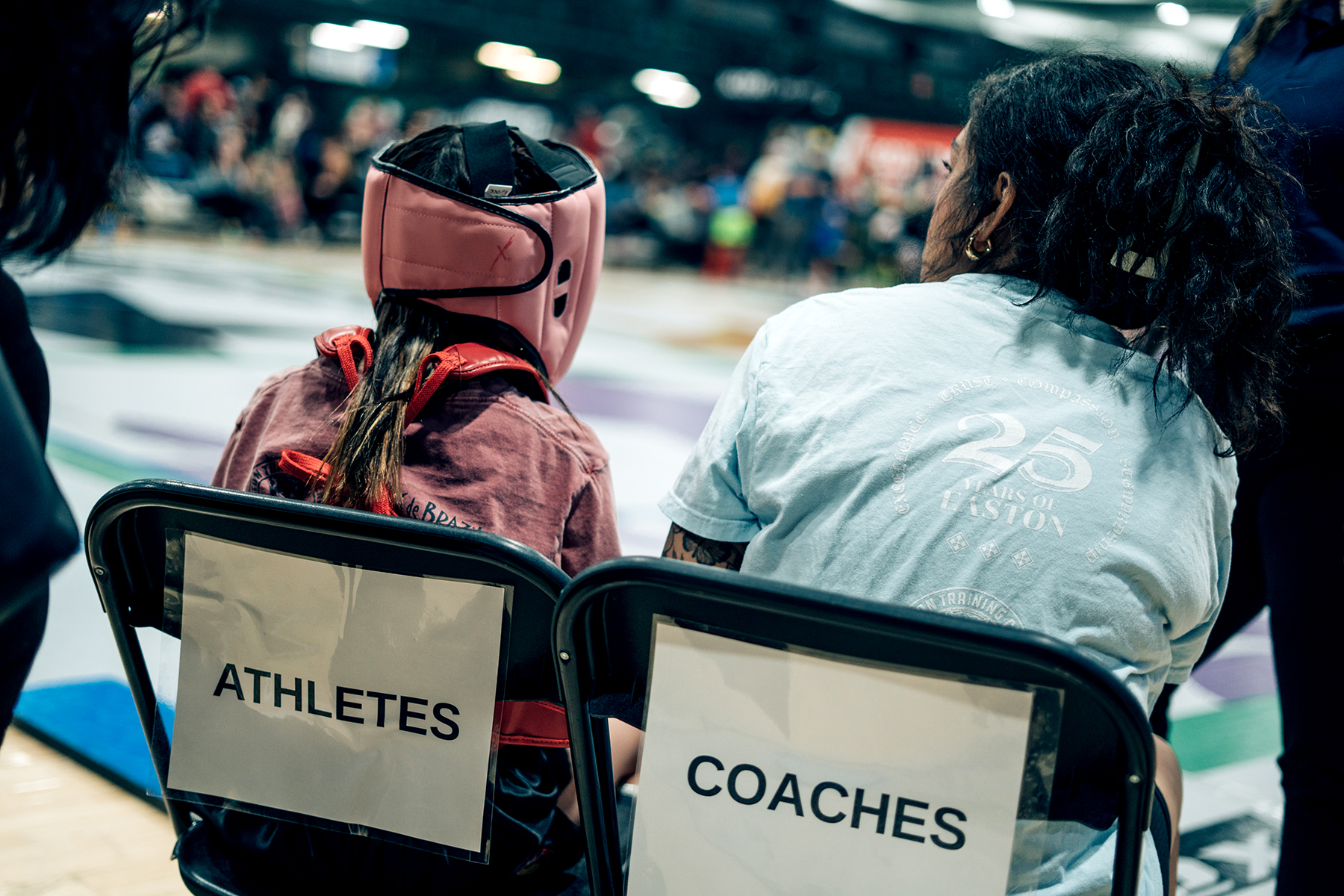
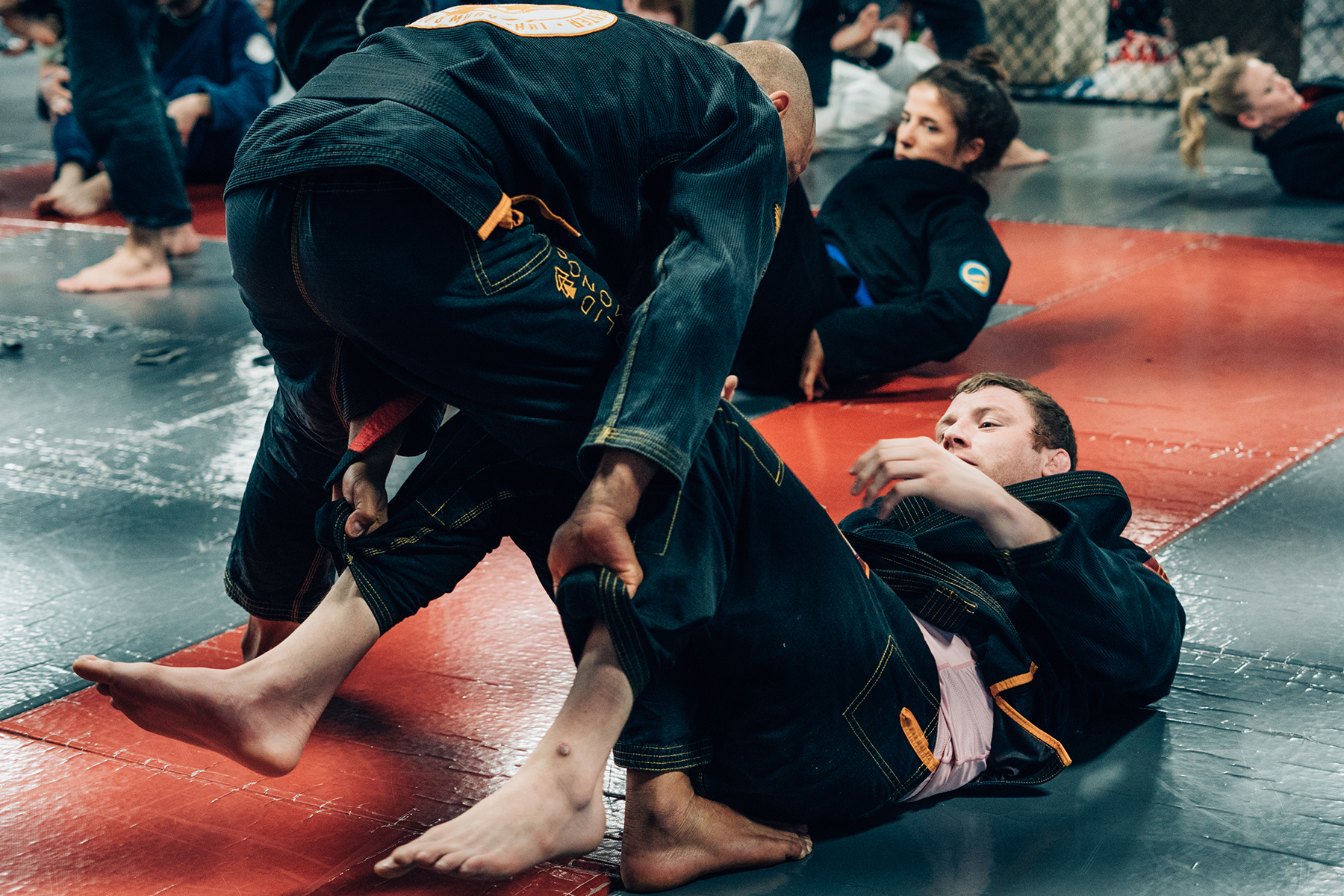



3 thoughts on “Know Your Colors: The BJJ Belt System”
Pingback: Easton Training Center | BJJ | Muay Thai Kickboxing | Kids | February 2019 Belt Promotion List - Easton Training Center | BJJ | Muay Thai Kickboxing | Kids
Pingback: Easton Training Center | BJJ | Muay Thai Kickboxing | Kids | Belt Promotion Ceremony Recap - Easton Training Center | BJJ | Muay Thai Kickboxing | Kids
Pingback: Easton Training Center | BJJ | Muay Thai Kickboxing | Kids | The IBJJF Belt System for Kids - Easton Training Center | BJJ | Muay Thai Kickboxing | Kids
Comments are closed.